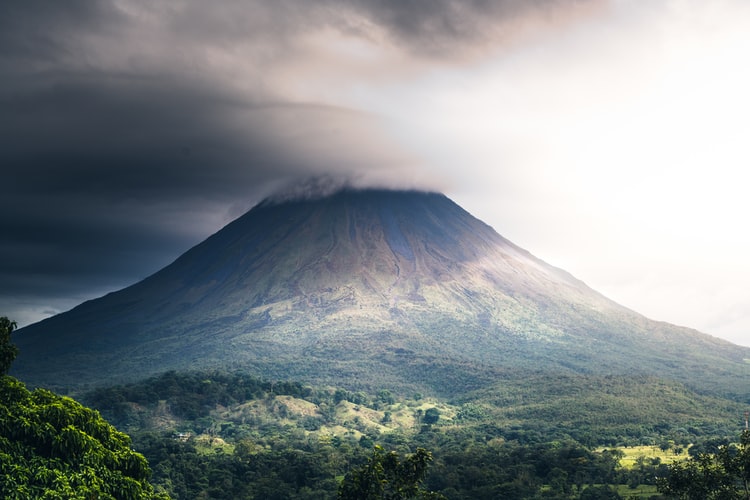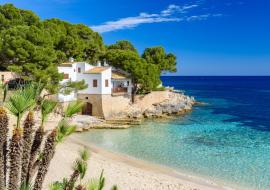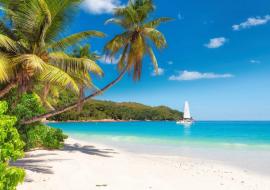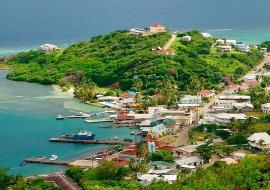Costa Rica: Three Keys to Tourism Growth

Costa Rica, which opened its doors to international tourism in August 2020 with the arrival of an Iberia flight, has positioned itself in 2021 as the best alternative for travel in this period and in the post pandemic, recovering more than 30% of its visitors up to April.
As part of its strategy in its bid for tourism reactivation, Costa Rica's Minister of Tourism, Gustavo Segura, visited Spain within the framework of Fitur accompanied by the delegation of the Costa Rican Tourism Institute (ICT) and sixteen tourism companies that wanted to be present at the international show.
In the specialized events aimed at the professional tourism sector and the press, Segura presented in first person the achievements of the tourism industry in Costa Rica since it began its gradual international opening in August 2020, becoming one of the few countries in the world fully open in which neither pcr test nor quarantine is needed to enter.
Gradual International Opening
Since March 2020, a Road Map has been activated, marked by a path towards the reactivation of tourism in which 17 sanitary protocols have been implemented for tourist activities and progress has been made little by little in smoothing measures concerning capacity, opening of beaches and guaranteeing compliance with safety and sanitary protocols. All this culminated in November 2020 with the opening of 100% of maritime and air borders for international visitors with no requirement of PCR negative or quarantine upon arrival in the country.
In fact, at present, a total of 471 Costa Rican companies have the Safe Travels seal granted by the World Travel and Tourism Council to the country and since the 100% opening of Costa Rica's air and sea borders, 30% of international tourism has been recovered up to April, which translates into 295,999 international arrivals from January to April 2021, "a growing trend compared to the last months of 2020" notes Minister Segura. "Although the scenarios are variable, we estimate that with the measures we have implemented we could receive up to 1 million tourists in 2021, which would allow many companies to operate at break-even point," he concludes.
This figure is expected to increase significantly after the agreement with Iberojet (Ávoris/Barceló Group), which will provide new weekly direct flights from Madrid to San José (Tuesdays and Saturdays) from July 13, complementing the traditional direct flights of Iberia, which currently operates with three weekly frequencies, but which from summer will recover the daily frequency as before the pandemic throughout July and August, in addition to the operations of other European airlines such as Lufthansa, KLM, Air France or Edelweiss.
The opening of the air border is of vital importance for the reactivation of employment through the tourism industry, which in turn is one of the main engines of the national economy, responsible for almost 10 points of the Gross Domestic Product and more than 600 thousand direct and indirect jobs. The reactivation of the tourism industry also entails the generation of foreign currency, of crucial importance for the stability of the exchange rate of the dollar with respect to the colón.
Visitor Profile
With an innovative tourism model, based on the development of the destination and its products; sustainable; and inclusive - that bets on the benefit and development of local communities -, the profile of the tourist visiting Costa Rica is that of an educated visitor, with a high level of education and income, who is interested in the country - not only in its tourist attractions - and in those destinations with principles in line with their own, of their interest (assuming the risk, since they are not so focused on safety). They prefer culture and nature to nightlife and like to move around and get to know, as well as try the local gastronomy. Also, more than half (54%) prioritize savings on flights compared to 20% who prefer to save on accommodation.
Costa Rican Values
The success of this recovery lies in the clear positioning of the country as the "sustainable tourism sanctuary" destination par excellence, since, in addition to grouping together more than 6. 5% of the world's biodiversity, it continues to implement measures of sustainability extended conservation (it has 26% of protected areas in a 54% of forested territory) and social progress in tourism, configuring a leading tourist destination in the world in terms of ecotourism, sports & adventure, wellness, multiculturalism, traditions, gastronomy and sustainable luxury, extensive air connectivity at European level and with the safety of tourists ensured with the compliance of all Covid standards.
In addition to all this, the country of Pura Vida has always been perceived among the first places of the happiest countries in the world, and the first in Latin America in the Happiness Index of the "New Economic Foundation"; committed to conservation; peaceful, as it has no army and therefore, no military spending; without an excessive growth of tourism: 94% of the country's tourism industry are small-scale businesses with less than 40 rooms; and also, with leadership in the field of renewable energy and decarbonization plan.
This is a governmental axis with which it hopes to become a green economy with zero net emissions by 2050, thanks to measures such as the ban on the use and entry of single-use plastics in National Parks, Biological Reserves and National Monuments, effective since last February. In addition, Costa Rica has accumulated six years with more than 98% renewable electricity generation.














